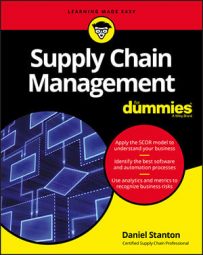- Designing supply chains for strategic advantage: Consider how your supply chain can help you create value. You want to plan to operate your supply chain better, faster, and cheaper than your competitors. You need to think beyond just lowering costs. Also consider ways in which your supply chain can help you grow revenue, innovate your products, and even create new markets.
- Implementing collaborative relationships: Consider how you can get teams to work together toward a common goal rather than competing for conflicting goals. If your sales team is trying to improve customer service by making sure that you have plenty of inventory available, for example, and your logistics team is trying to reduce inventory to lower costs, both teams are probably going to waste a lot of energy without achieving their goals. Supply chain management can help them align their objectives.
- Forging supply chain partnerships: Consider how you can build and sustain strong relationships with customers and suppliers. When companies understand that they depend on one another for their success — and perhaps their survival — working well together becomes a priority. Companies that don't do a good job of forming and sustaining supply chain partnerships end up at a competitive disadvantage.
- Managing supply chain information: Consider how you can make sure that information is shared with others in the supply chain in ways that create value for everyone. When retailers share sales data with their upstream partners, the manufacturers and distributors do a better job of scheduling production and managing inventory. When manufacturers share data about commodity prices and capacity constraints with their downstream supply chain partners, the retailers do a better job of managing pricing and promotions. Sharing the right information up and down the supply chain helps everyone create more value.
- Making money from the supply chain: Consider how you can leverage your supply chain design, relationships, partnerships, and information to capture value for your company. At the end of the day, businesses are sustainable only if they're able to capture value and generate a profit. In supply chains, a process change for one part often creates value for someone else. Find ways to share this value so that everyone has an incentive to work toward optimizing the value of the entire supply chain and ensuring that all the participants make a profit along the way.

